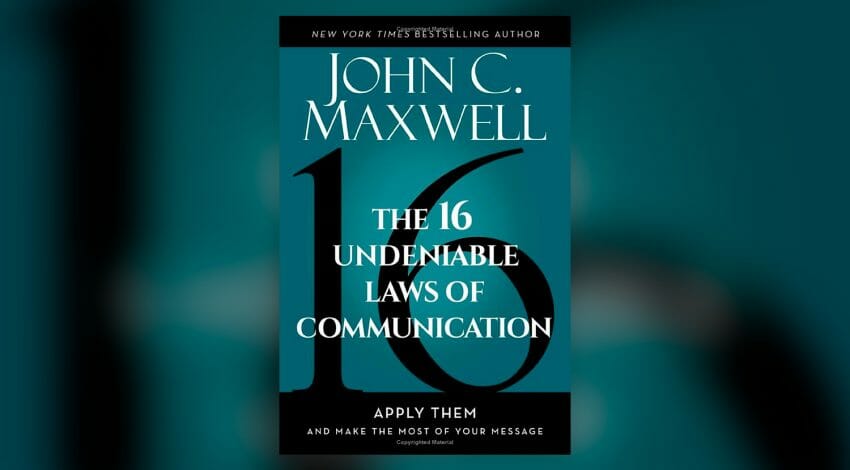Good Read: 16 Undeniable Laws of Communication by John C. Maxwell
by Angela Fieler
Who works for an organization where communication is not mentioned in employee surveys or focus groups as an improvement opportunity? Anyone? In my many years working in healthcare from both an operational and consulting perspective, communication has been an organizational issue. The issues are strategic in some cases. Others are personal, but in most, the issues are a combination of the two.
In his book, The 16 Undeniable Laws of Communication: Apply Them and Make the Most of Your Message, John C. Maxwell addresses the personal aspect of communication. He isn’t speaking directly to leaders and yet, if you believe communication is an essential leadership skill, this is a must- read for anyone in a position to influence others.
I won’t go through all the laws of communication, but I do want to touch on a few concepts that I have come across on a regular basis in my consulting and coaching practices. The first concept is that “Do as I say, not as I do” impedes your credibility. You might be rolling your eyes so let me share a few common examples that you might recognize. Does your organization have some kind of 10/5 rule where staff are expected to make eye contact with others at 10 feet and a verbal acknowledgement at 5 feet? Do you then walk down the hall focused on your phone? That’s eroding your credibility. How about telling your staff not to be like you when it comes to checking and responding to emails in the evenings or while on vacation?
One more hit to your credibility.
Another law that I see leaders struggle with is “Rely on your passion and tailor your message.” While your passion might get your audience’s attention, it won’t necessarily keep it. Think about what you want your audience to know, to feel, and to do. Chances are that the answers to those questions aren’t the same if you are speaking to senior leaders, middle managers, or frontline staff. It’s up to you to help each person you are addressing connect with what you are saying.
In my experience, leaders tend to overcomplicate the message. Sometimes, they try to cram everything into one communication. Other times, they include a lot of information to convey the validity of the message. Regardless of the reason, the result is that the key point gets lost. Maxwell recommends that you start with a single sentence that captures the key message. I would further advise that you make sure it isn’t a run-on sentence!
Being present is a phrase that gets a lot of attention in leadership literature. When it comes to communication, Maxwell’s law is about paying attention to your audience. I’ve been in far too many meetings where leaders failed to read the room or to make more time for listening than for talking. Every time you set out to relay a key message, you should also set out to understand how that message is being received and the impact it might have on others.
The last law of communication that I want to cover is “Tell a good story.” Facts and figures engage people’s minds. Stories engage their hearts. If you want people to really hear you, find a way to connect to their hearts. Gather stories that illustrate your message. Use different stories for different audiences. If you are not a good storyteller, enlist the help of those who are. Listen and learn. Practice.
If you want more examples of the 16 Laws, read the book. Maxwell practices what he preaches. Make the time to become a more effective communicator whether in one-on-one, small group, or large audience settings. You won’t regret it.
Want to learn more? Contact us today to learn more about how we help healthcare organizations improve their communications and, in turn, their company culture.
Tags: Communication, storytelling

